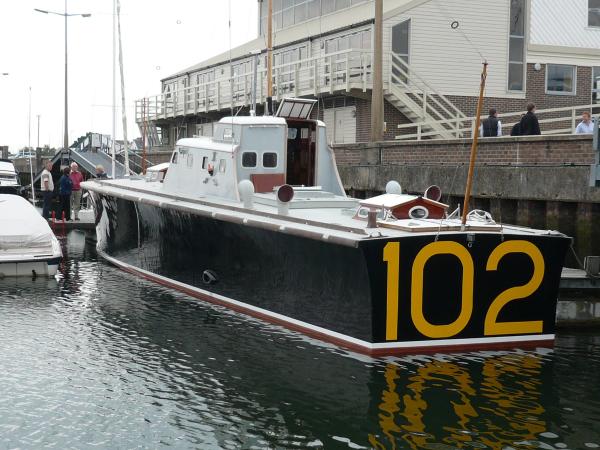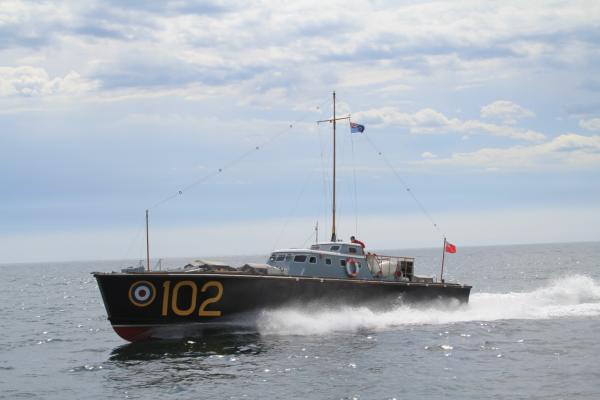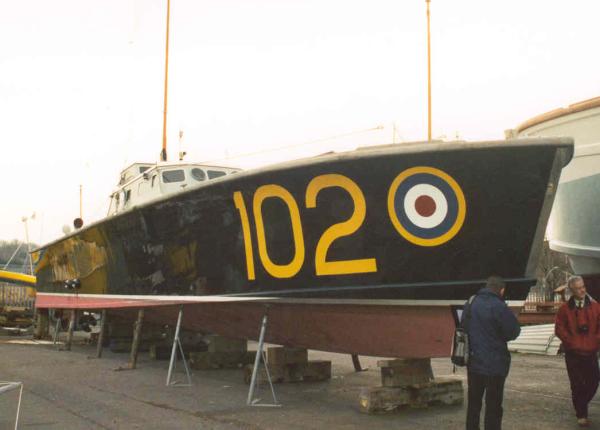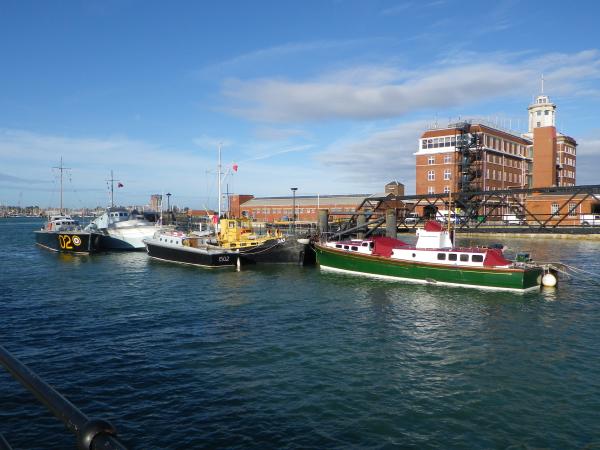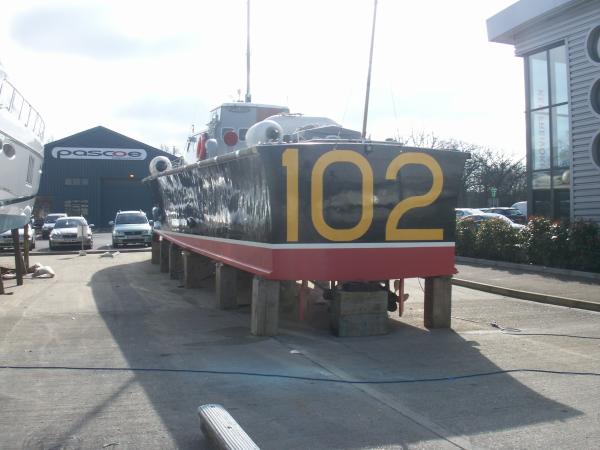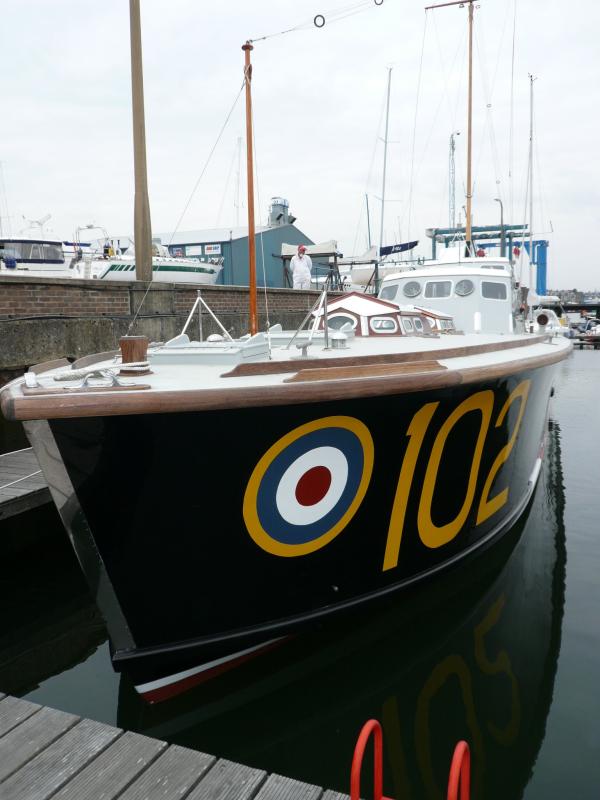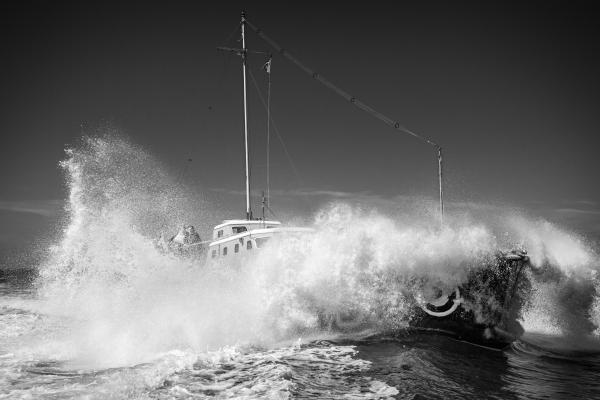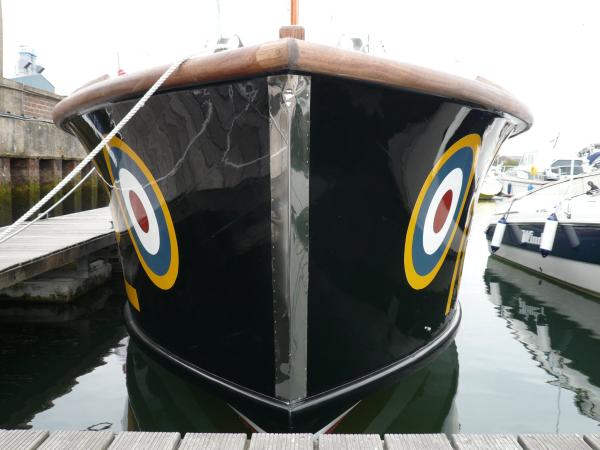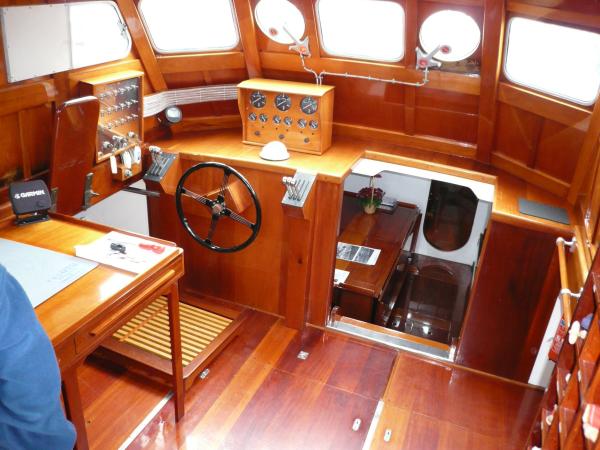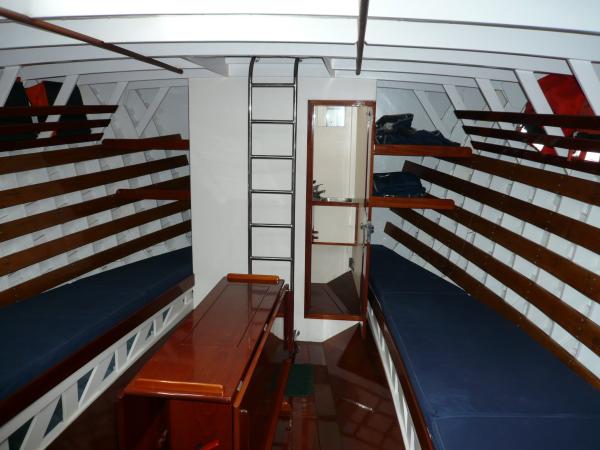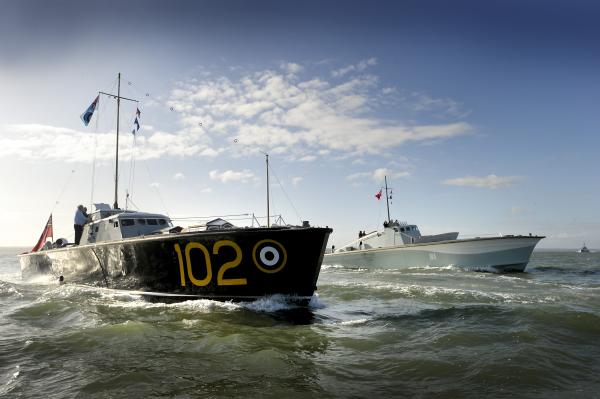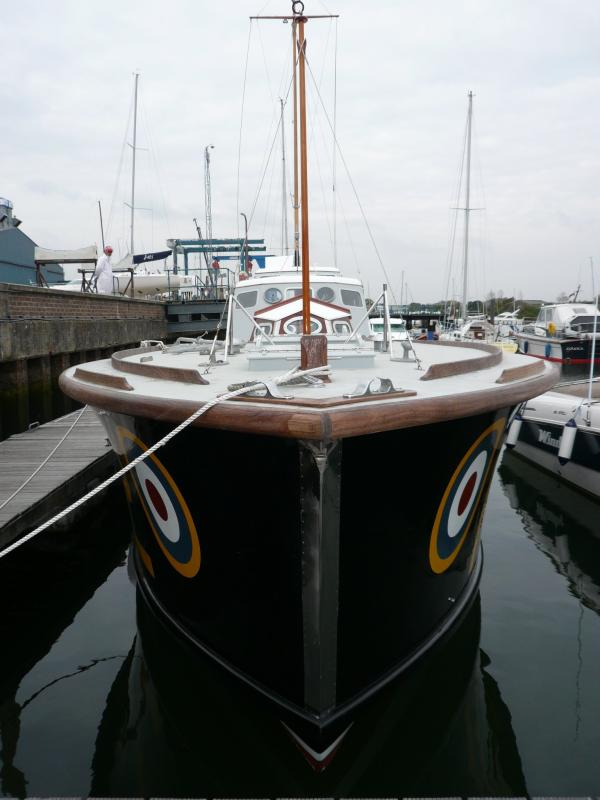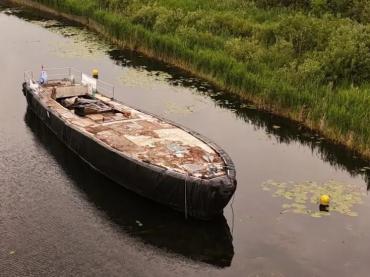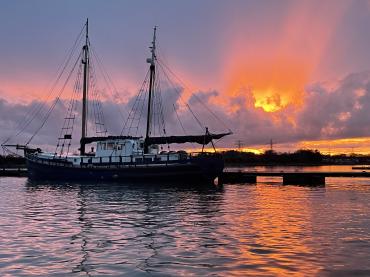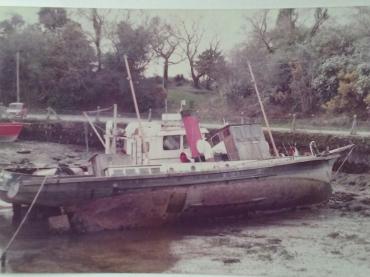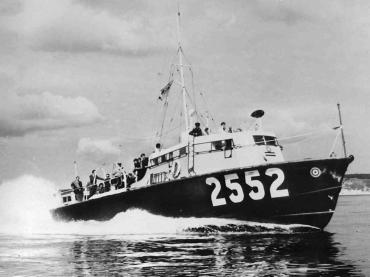

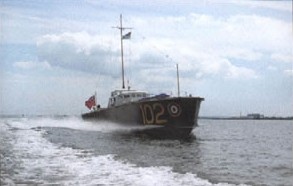
Details
Construction
Dimensions
History
HSL 102, the only survivor of the 100 class in the UK, was launched in 1936 and was one of the very first, fast offshore rescue boats in service with the Royal Air Force. She was one of the most technologically advanced production craft of the day, the brainchild of Hubert Scott-Paine. From his powerboat racing days, he developed the concept of fast planing 'hard chine' powerboats. He realised that boats which travelled over the surface of the water could travel more quickly and more efficiently than those which travelled through.
Of mahogany double-diagonal construction, she was powered by three Napier Sea Lion petrol engines. During the Battle of Britain, she was mostly based at Blyth, Northumberland. Her war service also included periods based on the Firth of Forth at Calshot. In two months in 1941, she rescued thirty-eight aircrew from the North Sea, including the crews of two German bombers. As a result, she was inspected by King George VI and Queen Elizabeth in July 1941.
When working off Calshot, she was damaged by a Messerschmitt 109 and her radio operator was killed. In 1943, she transferred to the Royal Navy for target towing, and paid off in 1946. She became a houseboat in Mill Creek at Darmouth and was in a sorry state when acquired for restoration. The extensive work needed was carried out by Powerboat Restorations at Fawley between 1993 and 1996. Three six-cylinder 420-bhp Cummins diesels were installed, giving a top speed of about 38knots.
On 5 July 1996, HSL 102 was relaunched at Fawley by Queen Elizabeth the Queen Mother, and was subsequently based at Lymington, Hampshire. In late 2009, she moved to Portsmouth following her acquisition by the Portsmouth Naval Base Property Trust, with the help of a grant from the National Heritage Memorial Fund. Source: Paul Brown, Historic Ships The Survivors (Amberley, 2010), updated Mar 2011.
Significance
What is the vessel’s ability to demonstrate history in her physical fabric?
More than 350 high speed launches of various types entered service with the RAF during the Second World War. Only a handful survive today, and only 102 is in her original condition (the others being houseboats). Although restored in the 1990s, most of HSL 102’s hull is believed to be original, including frames, longitudinals and hull planking. However, the deck, deckhouses and all internals are assumed, from photographs of the restoration, to be modern. Nonetheless, the hull is the most significant part of a vessel and most of it is believed to be the original 1936 timber.
HSL 102’s wartime service is beyond doubt, although the sources of her recorded history have yet to be located. She is often claimed to have been at Dunkirk, although this does not correspond to her supposed time in Scotland. No primary sources list HSL 102 at Dunkirk – it is likely that she has been confused with HSL 120 and MTB 102 (both of which were).
Unlike a conventional battlefield, the event of rescue at sea leaves little physical trace. Bases from which these boats operated used existing harbours and buildings, with little or no surviving architecture actually built in wartime. Most of 102’s notable events and achievements therefore have no location or artefacts, beyond 102 herself. With so few other wartime RAF rescue boats surviving 102 is therefore an exemplar of all wartime RAF rescue.
What are the vessel’s associational links for which there is no physical evidence?
102’s origins lie, to a certain extent in the 200 class seaplane tender, which has obvious links with T. E. Lawrence. Lawrence had no association with the 100 class (he died before HSL 100 was built), but there is an obvious evolution of his contribution in 102’s design. Care should be taken not to overstate this though, as his connection is probably closer to ST 1502, also in Boathouse 4’s collection.
102 also sits at the beginning of air-sea rescue in the Second World War. However, under wartime conditions, the flaws in the 100 class design were soon revealed. Fortunately, a brand new hull had just become available from British Power Boat and in 1940, production switched to the 63 ft whaleback design. This later evolved with the introduction of the 64 ft Type 3 boat and, post-war, the Rescue-Target Tower Launch. These designs have all influenced modern rescue boats, including those operated by the Coastguard and the RNLI. As a result, as one of the first class of dedicated rescue launches, HSL 102 represents an important first stage in rescue at sea.
How does the vessel’s shape or form combine and contribute to her function?
HSL 102’s hull form, a hard chine semi-planing hull, is designed for speed and, like other hard chine hulls, enables to hull to lift in the water and, to a certain extent skim across it. Her hull planking (double diagonal) reflects a growing trend in fast boats at the time and combines a fast (and relatively cheap) process with additional strength generated by the design, that allowed for mass production of boats that quickly became a crucial aspect of wartime boat building.
Inside there is a small officer’s cabin at the stern. Forward of the engines the sickbay, with separate crew space in the bow. Unlike Royal Navy vessels, the deck was uncluttered by weaponry or rails in order to make space for casualty recovery. However, the peacetime design was less effective in war. Engines were driven at maximum speed for far longer than had been envisaged and engine changes were time consuming. It was soon found that the boat’s high freeboard made casualty recovery difficult and the sick bay space became insufficient for the number of men requiring stretchers.
HSL 102’s design therefore reflects positive elements of fast boat design, but demonstrates the flaws that would only be revealed through service use.
Key dates
-
1936
Built by British Powerboat Company of Hythe
-
1937
Entered service with the RAF
-
1941
World War II service included 1940 Dunkirk evacuation and air sea rescue
-
1943
Transferred to the Royal Navy for target towing duties
-
1946
Decommissioned by the Royal Navy
-
1983-1996
Found in a derelict condition, rebuilt and restored
-
1996
Relaunched by Queen Elizabeth, the Queen Mother
-
2010
Acquired by the Portsmouth Naval Base Property Trust
-
2012
Vessel selected for Queen's Diamond Jubilee Pageant on 3 June 2012
Grants
-
2009
The National Heritage Memorial Fund awarded £580,000 for the acquisition of this vessel and MTB 102
Sources
World Ship Society British Armed Forces Small Craft Historical Society, Survivors Register, 1998
Brann, Christian, The Little Ships of Dunkirk: 55th Anniversary Supplement, Collectors' Books Ltd, 1995
Classic Boat: Nice weather for ducks, August 1998
Houston, Dan, Classic Boat: Powerful reminder, pp24-29, April 2000
Own this vessel?
If you are the owner of this vessel and would like to provide more details or updated information, please contact info@nationalhistoricships.org.uk

